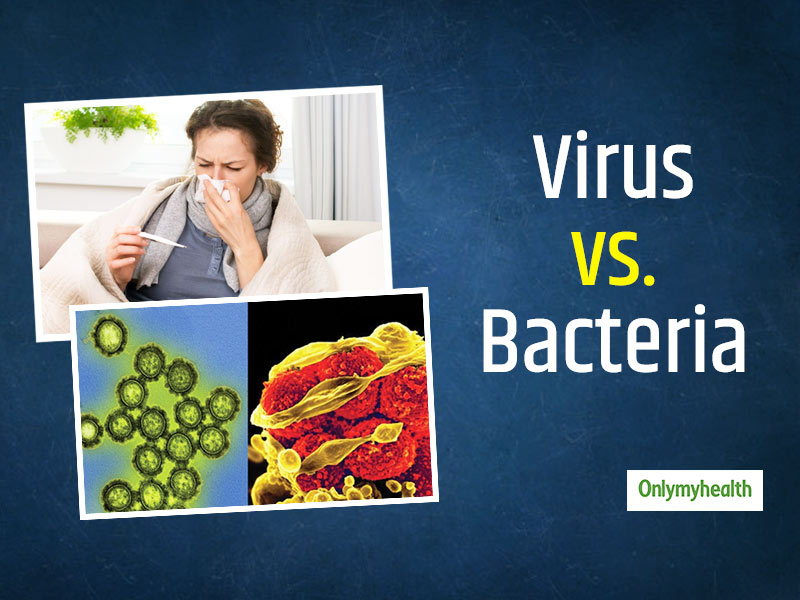
People often take antibiotics during cold or flu. Antibiotics (if taken properly) can usually kill bacteria but they are useless against viruses such as colds and flu. Do you know why? Because there is a huge difference between bacterial infection and viral infection. Most people are not aware of the difference between these two and their treatment. Therefore, today we will tell you the difference between the infection spread by bacteria and viruses. We will also try to understand the effective treatment of antibiotics.
Table of Content:-
Bacteria and viruses can cause many common infections. But most people do not know the difference between these two types of infectious organisms. Bacteria are small microorganisms that are made up of a single cell. They are very diverse and can have a large variety of sizes and structural features. Bacteria can live in almost every imaginable environment, including the human body. At the same time, only a few bacteria cause infection in humans. These bacteria are known as pathogenic bacteria.
Virus
The virus is another type of small microorganisms that are smaller than bacteria. Like bacteria, they are also very diverse and have a wide variety of shapes and characteristics. The virus is unique in that they are parasitic. This means that they require living cells or tissue (require living cells or tissue to grow), in which they develop themselves. Viruses can invade your body's cells and can multiply their components. Some viruses also kill host cells as part of their life cycle.
Difference between bacterial infection and viral infection
Also Read: Increase Good Bacteria in The Gut
Bacterial infection
Bacteria are single-celled microorganisms, which are found everywhere. They are found in air, soil, water, plants and animals. Most bacteria (including bacteria living in our intestines) are called good bacteria.

How do bacterial infections spread?
Many bacterial infections are contagious, which means that they can spread from one person to another. There can be several ways, including:
View this post on Instagram
- By coming in close contact with infected persons.
- Contact with an infected person's body fluids, especially after sexual contact, or when an infected person coughs or sneezes.
- Transmission from mother to child during pregnancy or birth
- Exposure to contaminated surfaces, such as door or faucet handles
- Touching the face, nose or mouth
Also Read: Kitchen Cleaning Products Are Harmful To Health
In addition to spreading from one person to another, bacterial infection can also spread through the bite of an infected insect. Besides, consuming contaminated food or water can also cause infection.
Antibiotics work for some common bacterial infections
- Tuberculosis
- Dry cough
- Urinary tract infection (UTI)
- Bacterial meningitis
- Lyme disease
How does the viral infection spread?
Like bacterial infections, many viral infections are also contagious. They can spread from one person to another in one way or in several ways. Such as:
- Coming in close contact with a person who has a viral infection
- Contact with body fluids of a person with a viral infection
- Exposure to contaminated surfaces
What are the common viral infections?
Some examples of viral infections include:
- Influenza
- Common Cough Cold
- Viral gastroenteritis
- Chickenpox
- Measles
- Viral meningitis
- Human Immunodeficiency Virus (HIV)
- viral hepatitis
- Zika virus
Antiviral drugs, which usually do not destroy the virus, but can prevent its development. According to Medical News Today, antivirals are also available to treat certain diseases such as herpes simplex virus, flu and herpes.
Watch Video:
Read More in Miscellaneous
How we keep this article up to date:
We work with experts and keep a close eye on the latest in health and wellness. Whenever there is a new research or helpful information, we update our articles with accurate and useful advice.
Current Version
